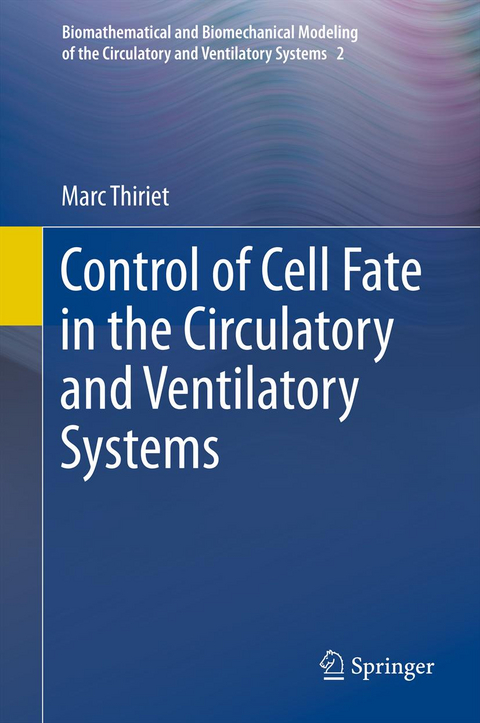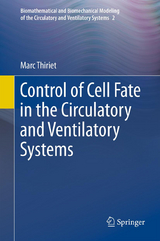Control of Cell Fate in the Circulatory and Ventilatory Systems
Seiten
2011
Springer-Verlag New York Inc.
978-1-4614-0328-9 (ISBN)
Springer-Verlag New York Inc.
978-1-4614-0328-9 (ISBN)
The volumes in this authoritative series present a multidisciplinary approach to modeling and simulation of flows in the cardiovascular and ventilatory systems, especially multiscale modeling and coupled simulations. The cardiovascular and respiratory systems are tightly coupled, as their primary function is to supply oxygen to and remove carbon dioxide from the body's cells. Because physiological conduits have deformable and reactive walls, macroscopic flow behavior and prediction must be coupled to nano- and microscopic events in a corrector scheme of regulated mechanisms. Therefore, investigation of flows of blood and air in physiological conduits requires an understanding of the biology, chemistry, and physics of these systems together with the mathematical tools to describe their functioning.
Volumes 1 and 2 are devoted to cell organization and fate, as well as activities that are autoregulated and/or controlled by the cell environment. Volume 1 examined cellular features that allow adaptation to environmental conditions. Volume 2 begins with a survey of the cell types of the nervous and endocrine systems involved in the regulation of the vasculature and respiratory tract and growth factors. It then describes major cell events in the circulatory and ventilatory systems, such as cell growth, proliferation, migration, and death. Circadian cycles that drive rhythmic gene transcription are also covered.
Volumes 1 and 2 are devoted to cell organization and fate, as well as activities that are autoregulated and/or controlled by the cell environment. Volume 1 examined cellular features that allow adaptation to environmental conditions. Volume 2 begins with a survey of the cell types of the nervous and endocrine systems involved in the regulation of the vasculature and respiratory tract and growth factors. It then describes major cell events in the circulatory and ventilatory systems, such as cell growth, proliferation, migration, and death. Circadian cycles that drive rhythmic gene transcription are also covered.
Introduction.- 1. Remote Control.- 2. Cell Growth and Proliferation.- 3. Growth Factors.- 4. Cell Survival and Death.- 5. Circadian Clock.- 6. Cell Motility.- Concluding Remarks.- References.- Appendix: Notations—Aliases and Symbols.- Notations—Prefixes and Suffixes.- Biochemical, Medical, and Physical Aliases.- Mathematical Symbols, Molecules, and Physical Quantities.- Index.
| Reihe/Serie | Biomathematical and Biomechanical Modeling of the Circulatory and Ventilatory Systems ; 2 |
|---|---|
| Zusatzinfo | X, 538 p. |
| Verlagsort | New York, NY |
| Sprache | englisch |
| Maße | 155 x 235 mm |
| Themenwelt | Medizinische Fachgebiete ► Innere Medizin ► Kardiologie / Angiologie |
| Studium ► 1. Studienabschnitt (Vorklinik) ► Physiologie | |
| Naturwissenschaften ► Biologie ► Zoologie | |
| Naturwissenschaften ► Physik / Astronomie ► Angewandte Physik | |
| Technik ► Maschinenbau | |
| Schlagworte | blood flow prediction • cardiovascular systems modeling • cell cytoskeleton • cell environment • cell membrane • Cell signalling • cell types systems • cell types tract • macroscopic blood flow behavior • modeling respiratory function • modeling simulation of flows • physiological flows • ventilatory systems modeling |
| ISBN-10 | 1-4614-0328-6 / 1461403286 |
| ISBN-13 | 978-1-4614-0328-9 / 9781461403289 |
| Zustand | Neuware |
| Haben Sie eine Frage zum Produkt? |
Mehr entdecken
aus dem Bereich
aus dem Bereich
in Fällen, Fragen und Antworten
Buch | Softcover (2024)
Urban & Fischer in Elsevier (Verlag)
89,00 €
Diagnostik und interventionelle Therapie | 2 Bände
Buch (2024)
Deutscher Ärzteverlag
349,99 €




